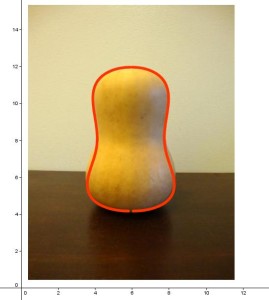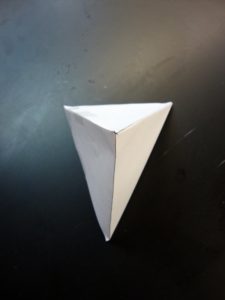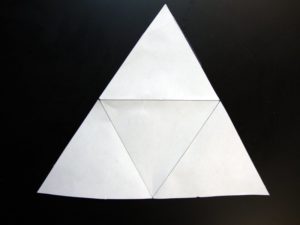 Inspired by some of my own forays into curvefitting with Geogebra (the squash at the right, or my Sine Waves on the Beach), I’ve created a student project built around the idea.
Inspired by some of my own forays into curvefitting with Geogebra (the squash at the right, or my Sine Waves on the Beach), I’ve created a student project built around the idea.
Finishing up a unit on trigonometry with graphs of trigonometric functions, it occurred to me that I have never really been comfortable teaching transformations. I think part of the reason is that it’s hard to get your hands dirty, play around, and develop intuition with this topic. This is where Geogebra comes in!
The project essentially works like this:
1) Students find an image, preferably one they capture themselves
2) Students paste the image into Geogebra
3) Students graph a relevant trigonometric function and play around with the various parameters (like period, amplitude, phase shift) until the curve fits the image
4) Students can use domain restrictions, and some of Geogebra’s aesthetic features, to polish everything up.
The first run of this project has produced some great results! You can see some sample student work here, and more on my Facebook page.
Related Posts
- Student Work — Curvefitting with Geogebra
- Using Mathematics to Create — Geogebra
- How Many Circles Pass Through Two Given Points?




